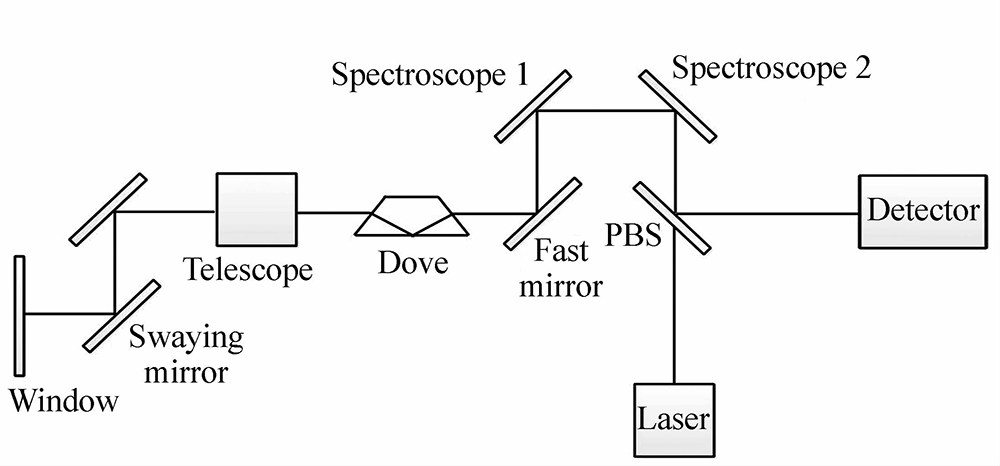Polarization properties of Dove prisms
Jun. 13, 2023
With the development of science and technology and the needs of the battlefield environment, aviation optoelectronic pods are moving in the direction of miniaturization, light systems, and multi-functionalization. The common caliber technology of visible band and infrared band target detection eight and laser ranging and angular tracking in optoelectronic pods meet the development needs of optoelectronic pods and have been widely studied at home and abroad.
Visible band, infrared band and laser ranging and tracking system share the same telescopic objective in the optoelectronic pod to achieve the detection, identification, positioning and tracking of the target, which can greatly reduce the volume and weight of the system, reduce the system cost, ensure the coaxiality of the system multi-spectral optical path, and improve the identification, positioning and tracking accuracy of the target. In the realization of the three-band common aperture, there are some technical problems, such as optoelectronic pods in the pendulum mirror system for target detection, pitch and azimuth angle changes, resulting in visible and infrared images will occur at a certain angle of rotation, in order to facilitate human eye observation and system positioning tracking, the system needs to join the rotation device. At present, the rotation image mainly uses two methods: one is based on the pixel coordinate transformation in the image to rotate the image, but the size of the rotated image on the display will change with the different rotation angles, which is not conducive to human eye observation; the other is to join the rotation image prism in the optical path to rotate a certain angle, which can make the rotated image on the screen to get a stable display, which is conducive to human eye observation. Therefore, a Dove prism is added to the common optical path and rotated by a corresponding angle to compensate for the rotation of visible and infrared images; as the laser ranging and angle tracking system in the pod also adopts the common aperture design, the rotation of the Dove prism will change the polarization state of the laser pulse from the laser, resulting in a partial loss of laser pulse energy, and change the polarization state of the laser backscatter noise in the common aperture system, making the backscatter noise in the system. This makes the elimination of the backscatter noise in the system more difficult and even causes the co-aperture laser system to fail to work properly.
Dove Prism is located in the common optical path position of the common aperture system, as shown in Figure 1, and the visible and infrared detection systems are behind beamsplitter 1 and beamsplitter 2, respectively. When Dove Prism is rotated by a certain angle, the visible and infrared radiation images can be rotated to compensate for the effect of the rotation of the pendulum mirror system. However, due to the polarization characteristics of Dove Prism, changing the polarization state of the laser emission pulse leads to the change of the polarization state of the backscattered pulse reflected at the window, which increases the difficulty of its suppression.

◢Polarization properties of Dowell prisms
The laser pulse E1 from the laser is a line polarization pulse with only p component, and when it is incident to the Dove Prism, the laser pulse is refracted and reflected on the surface of the Dove Prism. When the laser pulse containing only the p component is incident on the Dove Prism, the rotation of the Dove Prism causes the s and p components of the laser pulse to components of the laser pulse at the bottom surface changes, so the polarization state of the outgoing laser The polarization state of the outgoing laser pulse changes.

It can be seen that the polarization properties of the Dove prism make it useful in a variety of fields, and the Dove prism has two uses. The primary use is as an image rotator. When the prism is rotated, the angle of rotation of the image after passing through the prism is twice the angle of rotation of the prism. The other use, like the 180° right angle prism, is as a 180° total reflection prism.
CLZ Optical Co., Ltd.can produce a variety of prisms including the Dove prisms mentioned in this article.And we also could provide custom service, many kinds of substrate material such as optical glass, sapphire, fused silica,silicon and so on, main product such as plano-concave lenses, plano-convex lenses, optical domes, cylindrical lenses,ect.
Please contact us free time if you are interested in the product!




















